Photographing a bird as it lands is much more difficult than when it is taking off.
In the past I’ve occasionally (very occasionally) been able to get a single frame or two of a landing bird, usually by anticipating its perch and pre-focusing on it. But nine days ago on Antelope Island I was finally able to lock on to a bird in flight and stay locked on as it landed. And as a bonus I didn’t clip or cut off any body parts in the process.
Each of these eight images is in a sequence without any “skips”.
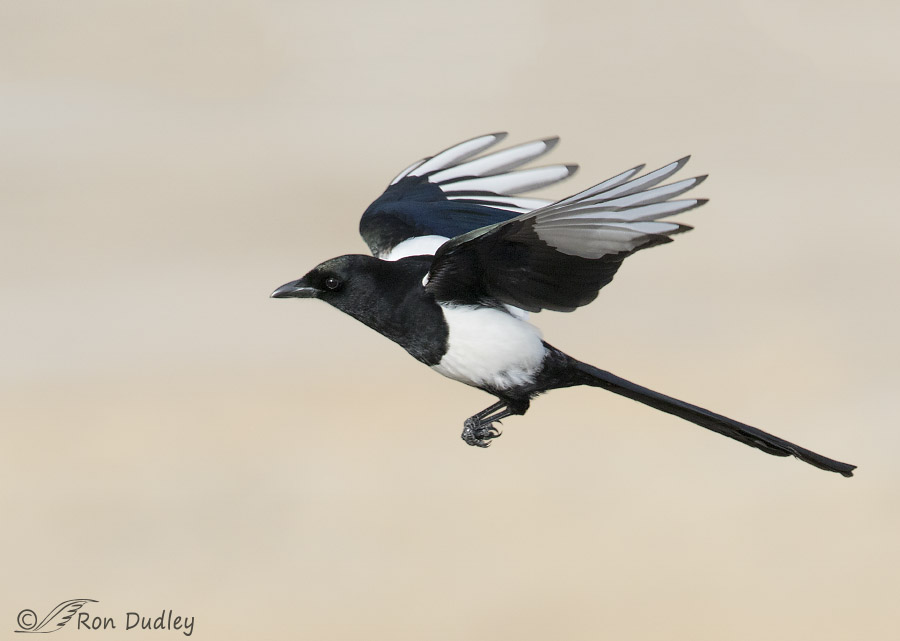
1/2500, f/7.1, ISO 640, Canon 7D Mark II, Canon EF500mm f/4L IS II USM, canvas added for composition, not baited, set up or called in
The magpies on the island have been building nests sporadically for almost two weeks now. This bird was coming in to land on the nest bush when I first locked on and began the burst.
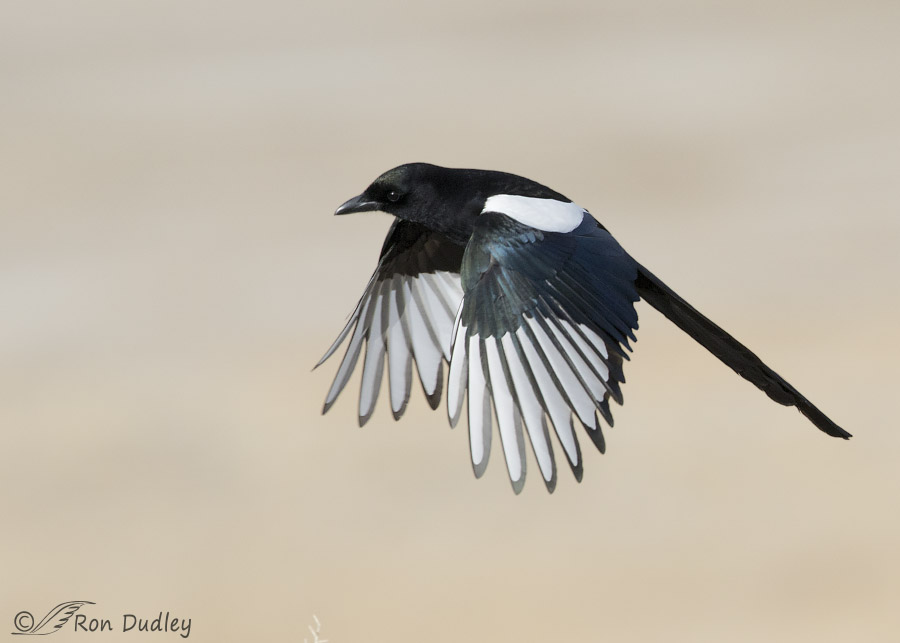
1/3200, f/7.1, ISO 640, Canon 7D Mark II, Canon EF500mm f/4L IS II USM, not baited, set up or called
Here the soon-to-be perch is barely out of frame to the left.
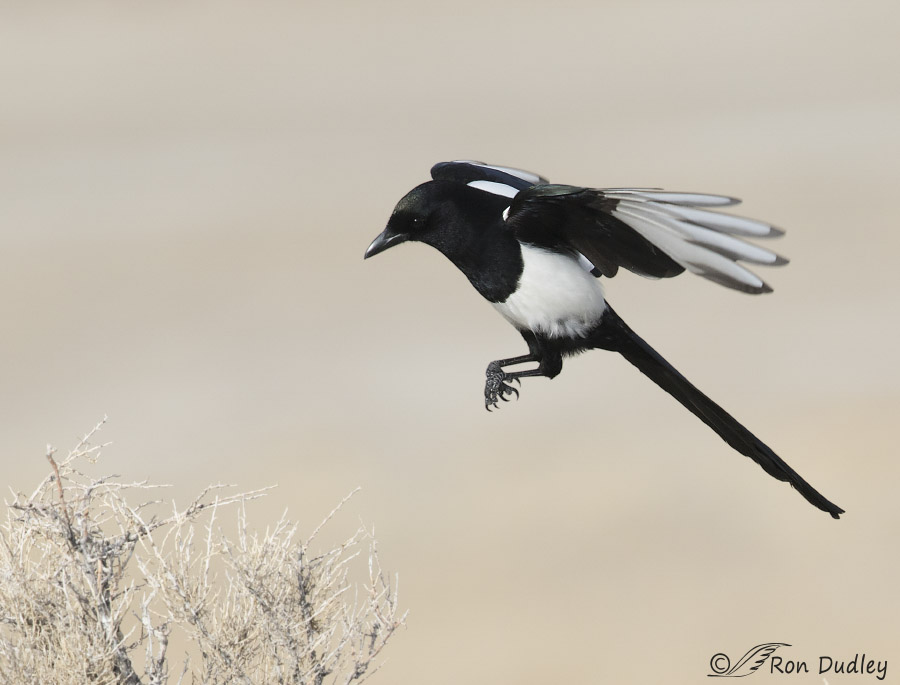
1/2500, f/7.1, ISO 640, Canon 7D Mark II, Canon EF500mm f/4L IS II USM, not baited, set up or called
Now the perch is in view. I was slightly surprised that at this point the magpie hadn’t already flared its tail but I suspect that its airspeed wasn’t fast enough to make it necessary.
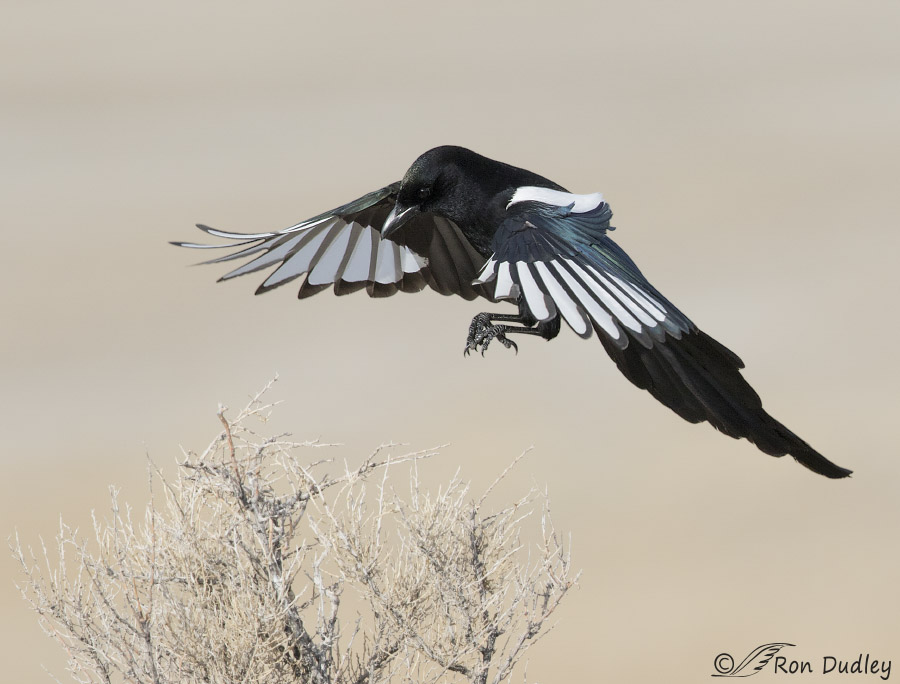
1/2500, f/7.1, ISO 640, Canon 7D Mark II, Canon EF500mm f/4L IS II USM, not baited, set up or called
Here the tail did flare a little but just for an instant.
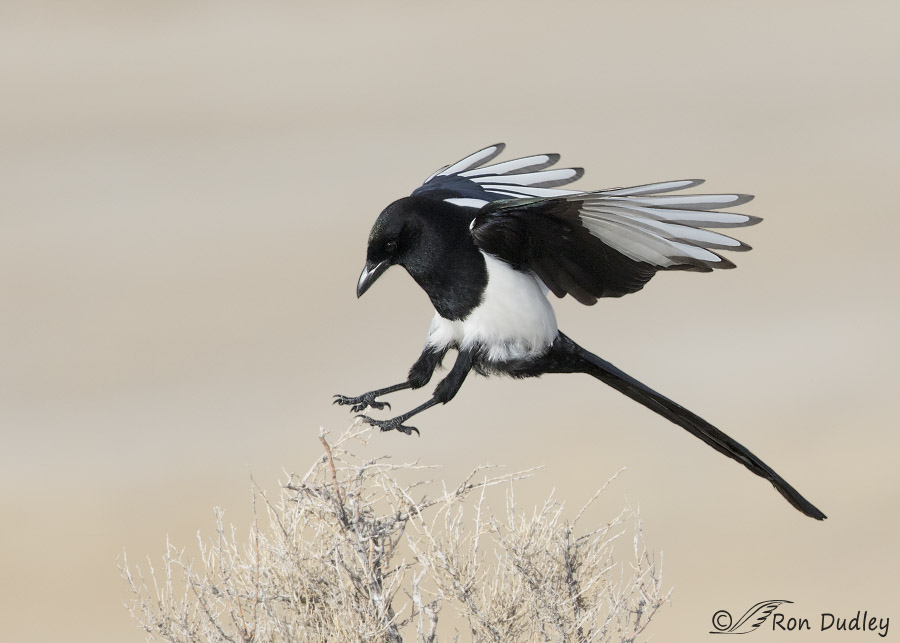
1/2500, f/7.1, ISO 640, Canon 7D Mark II, Canon EF500mm f/4L IS II USM, not baited, set up or called
The feet reached out to grab the perch…
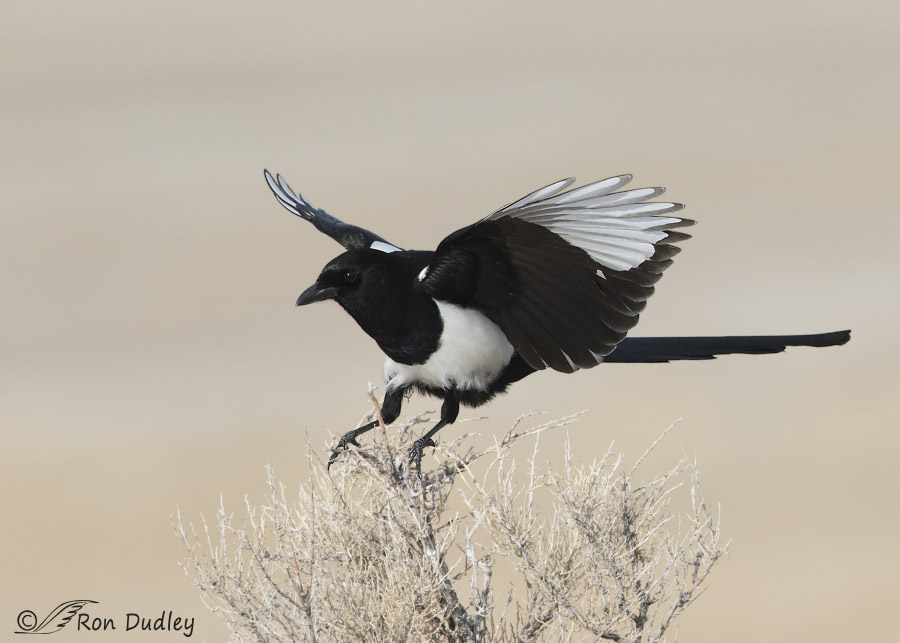
1/2500, f/7.1, ISO 640, Canon 7D Mark II, Canon EF500mm f/4L IS II USM, not baited, set up or called
and we have contact.
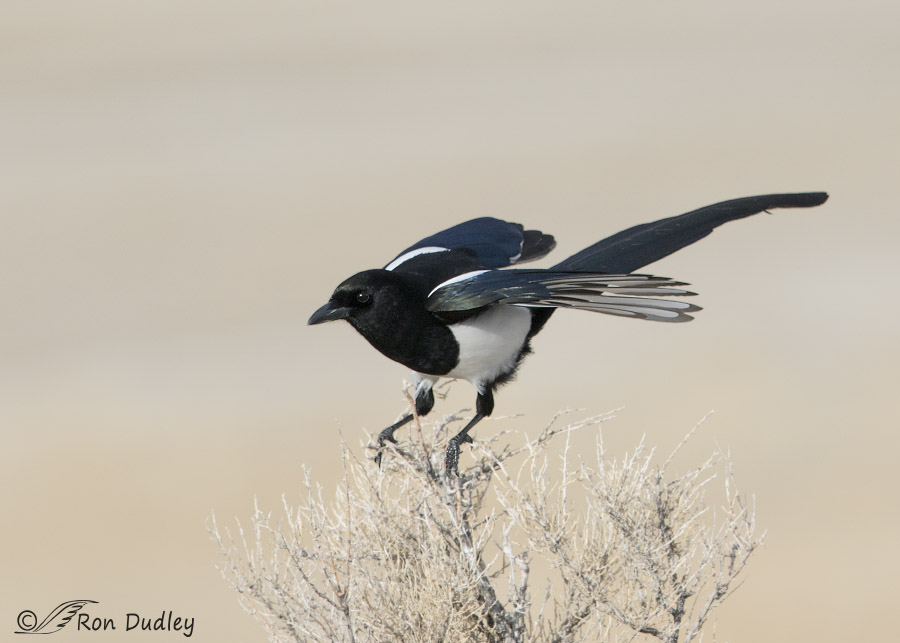
1/2500, f/7.1, ISO 640, Canon 7D Mark II, Canon EF500mm f/4L IS II USM, not baited, set up or called
The magpie begins to fold its wings…
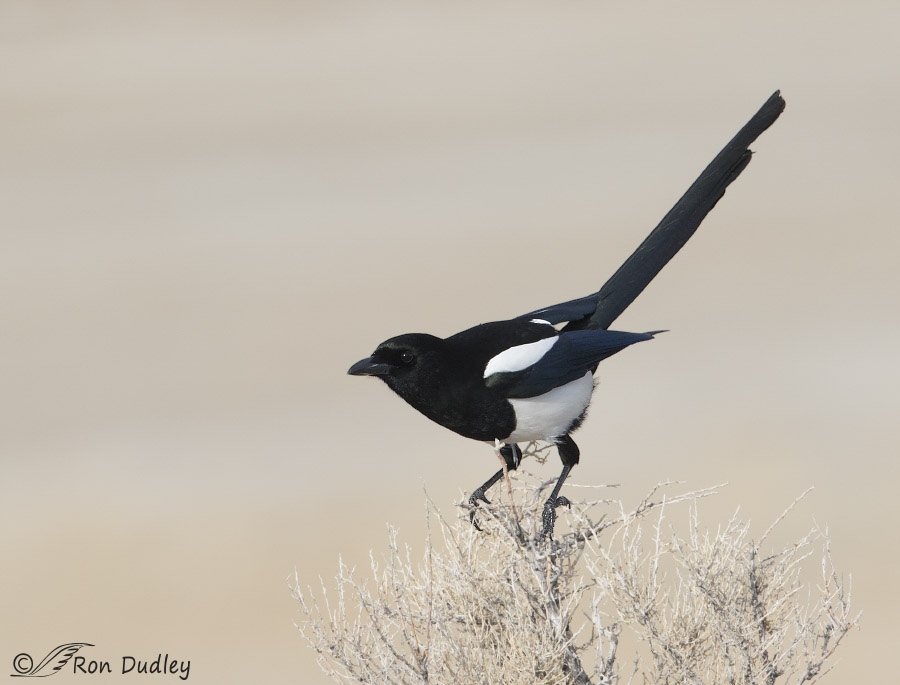
1/2500, f/7.1, ISO 640, Canon 7D Mark II, Canon EF500mm f/4L IS II USM, not baited, set up or called
and settles on its perch. But only for a moment. And when it took off, you guessed it – I clipped one of its wings on both take-off shots.
All this happened very quickly. At the 10 frames/sec burst rate of my Canon 7D Mark II the entire sequence took only .8 sec.
Don’t get me wrong, I’m not saying these are great shots. The featureless background isn’t my favorite (although it probably helped me to maintain focus on the bird) and I don’t think the bright perch is particularly attractive. But for me it was an accomplishment of note to get the entire landing sequence so I had to “crow” about it a little (sorry about that but at least both crows and magpies are corvids…).
I think I’ll try for these sequences more often in the future.
Ron


Ron:
You deserve “to Corvid a bit” about this sequence. Just curious … how many points were you using for autofocus?
Dave
Thanks, Dave. And “corvid” I did!
I was using the 5 center AF points, which is what I nearly always do for birds in flight.
Now that takes skill-for you and the bird.
Great sequence! Beautiful bird!
This is a beautiful series Ron.
Just wonderful – I love how beautiful this learning is! Thanks…
Goregous!
Magpie magic. Thank you for the sharing! I like how the bird eyed the landing then stuck it. I was waiting for the wings up of the successful gymnast.
I think the comparison to a gymnast works well, Arwen. Thank you.
Putting this all together is quite amazing. Maintaining focus lock, the contrast problems presented by a Magpie, the size of the bird with that long tail. Truly a photograph only possible with a solid base of skill. Those who have tried something similar know how wonderful this series is!
Thank you for sharing this, Ron!
Thank you, Wally. You’re right in that a lot of things came together for this series. Add to your list the fact that I got light in the eye in all 8 shots. I was very lucky.
Breathtaking! Your heart surely danced! I don’t object to the featureless background because the energy of the bird is so prominent. And the perch? Well, that’s nature, and it was good enough for the magpie. These are exciting shots!
“Your heart surely danced”
Darned tootin’ it did, Jane, but I didn’t trip the light fantastic until I got home and saw the images on my screen. I never know for sure if the images are sharp or not until I do that.
Awesome series Ron! CONGRATS!
Charlotte
Thanks very much, Charlotte.
Pure eye candy!!! Especially for those of us you’ve converted into Magpie Maniacs(otherwise known as M&M’s)……….
I’ve been an M&M for some time now, Patty – doubly appropriate for me since I’m a chocoholic (especially if it has almonds in it…)
I really like this sequence – it makes me think about what skill it takes to land on small things that mostly don’t hold still when weight is applied. I’ve watched young Kestrels learn to balance on moving palm fronds in strong winds, and seen how hard it is for them. Birds’ flight skills amaze me, and it is great that you were able to capture this landing. Too bad about the take-off shots, but you get and show a lot more of those than of landings.
“it makes me think about what skill it takes to land”
That’s exactly what goes through my mind when I see a sequence like this, Susan – or even when I watch a landing bird without photographing it.
Good Morning, Ron that is a great sequence. I try to take photos of birds also and I appreciate how hard that was. Len
Thanks, Len. Apparently it isn’t easy because I’ve sure tried a lot of times in the past and failed.